The University Archives turns 70 on 3 May this year. To celebrate this milestone, check the blog at the end of each week for the week’s special stories from our collections.
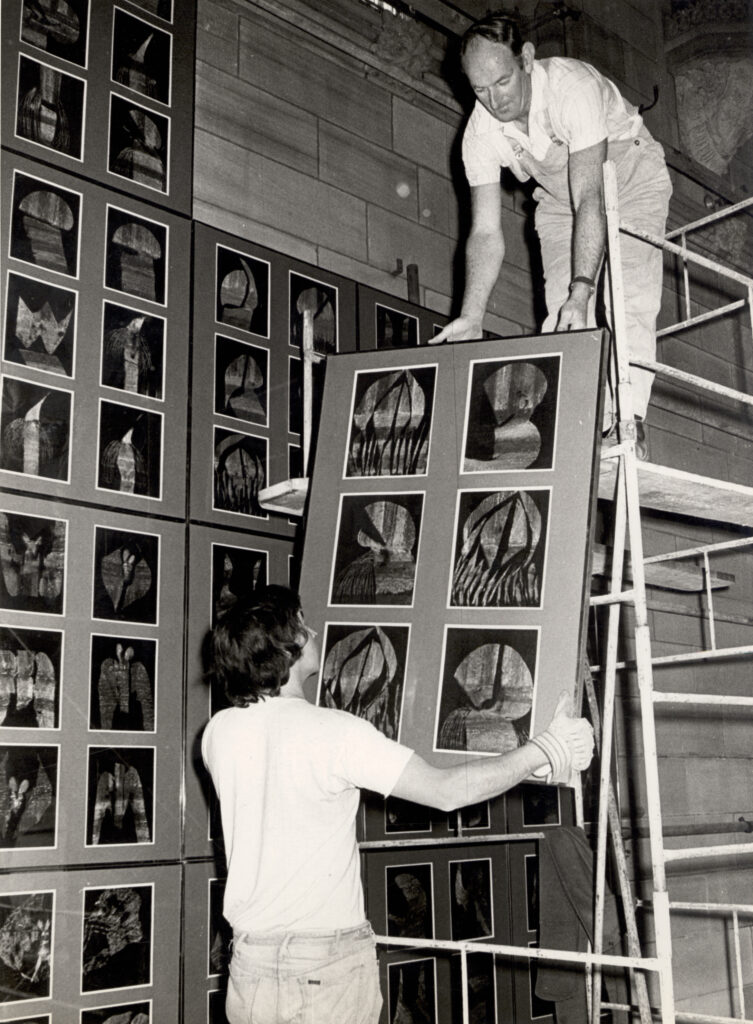
29 January 2024
Watch Out for the 150 Foot Snake in the Great Hall!
The mammoth 1,620 panel artwork by Sidney Nolan (now in the Museum of Old and New Art (MONA), Hobart collection) was hung in the Great Hall in 1973 as part of the celebrations for the opening of the Sydney Opera House.
Hanging ‘Snake’ by Sidney Nolan in the Great Hall (13/10/1973), [REF-00014614]. University of Sydney Archives, accessed 29/01/2024, https://archives-search.sydney.edu.au/nodes/view/34568.
30 January 2024
Which Professor Never Left the University Grounds?
Francis Anderson, Challis Professor of Logic and Mental Philosophy from 1890 to 1921, died in his home in Woollahra on 24 June 1941.
On 7 July 1953, Senate reported that under the will of Anderson’s wife, Lady Josephine (nee Maybanke), the University was entitled, “…to a legacy of the late Lady Anderson’s bookcases and library books and also the sum of £2000 for the purpose of erecting a memorial fountain in the centre of the quadrangle in memory of her late husband, Professor Sir Francis Anderson”. The Vice-Chancellor suggested that approval be sought from the executors of the estate to change the site of the fountain to its current location.
Professor HI Ashworth of the Faculty of Architecture was invited to design the fountain, who accepted and provided sketch drawings on 24 November 1953 and noted that, “the ashes of the late Professor Sir Francis and Lady Anderson will be embodied in the memorial stele”. The ashes, held by the Cremation Society, were transferred to the University in 1955 for installation within the stone memorial head adjacent to the fountain.
Anderson Fountain Following Restoration (1984), [REF-00012496]. University of Sydney Archives, accessed 30/01/2024, https://archives-search.sydney.edu.au/nodes/view/30950.
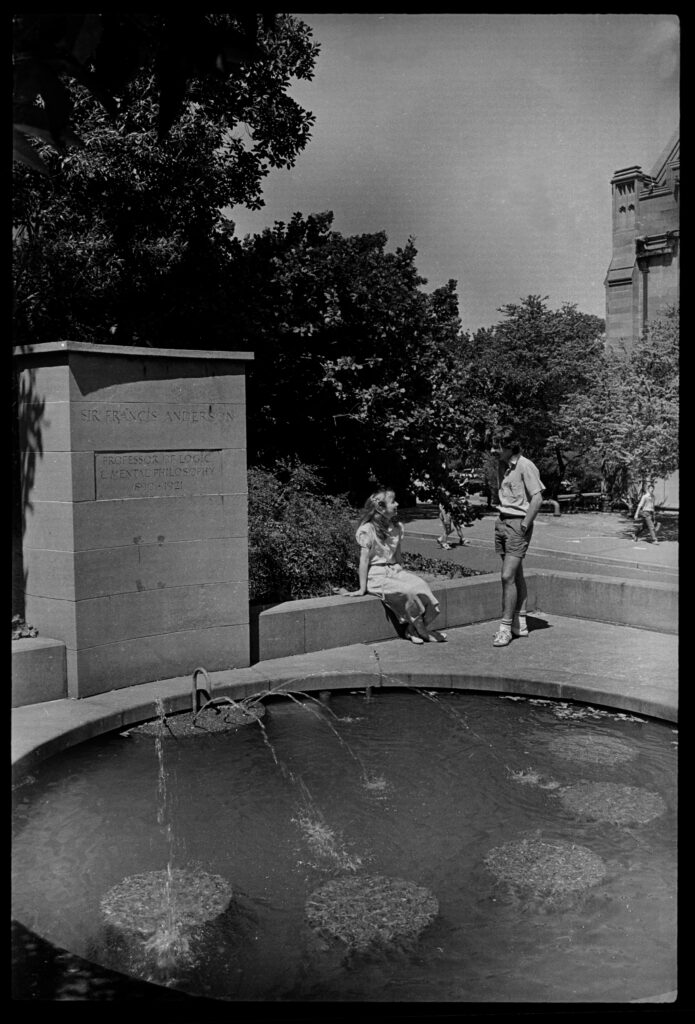
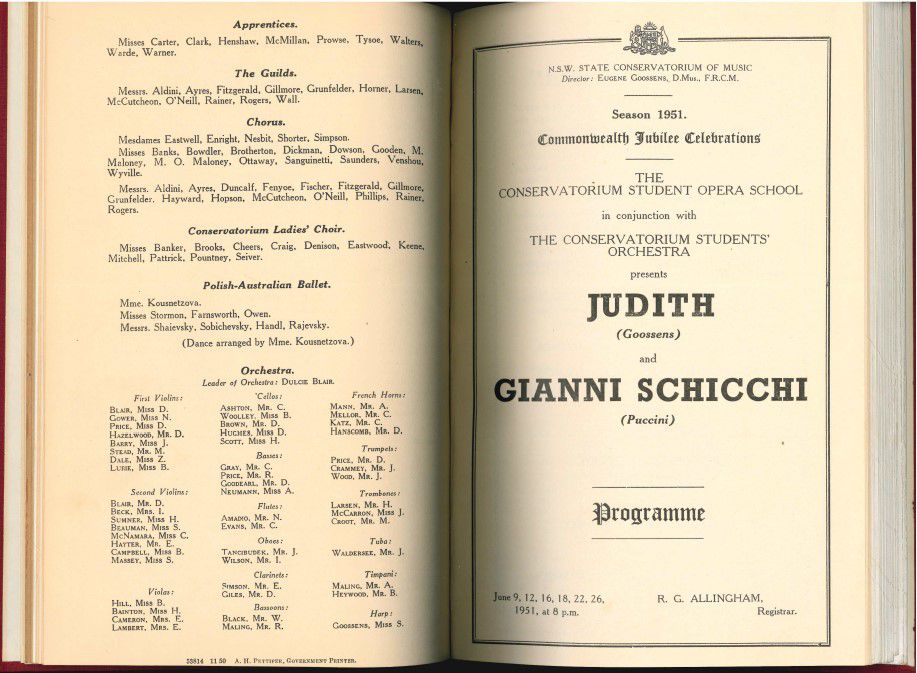
31 January 2024
The Book of Judith
Dame Joan Alston Sutherland, who today requires no introduction, made her stage debut in June 1951 in Eugene Goossens’, Judith, an “opera in one act”. On 9, 12, 18 and 22 June, Dame Sutherland played Judith, “a Jewish woman”.
Dame Sutherland’s association with the University, however, can be traced back to the late 1880s, as her great-grandfather and grandfather, of Alston and Company, worked on the stonework of the Anderson Stuart Building as well as other sandstone buildings at the University. She mentioned this historic link when she was bestowed with an honorary degree on 12 September 1984.
Conservatorium Opera Programs, 1945-1962 (1945 to 1962), [REF-00089083]. University of Sydney Archives, accessed 31/01/2024, https://archives-search.sydney.edu.au/nodes/view/141900.
1 February 2024
Can I Change My Mind?
Jamie Bulbeck, a 2nd year Aeronautical Engineering student, on a new climb at North Head might have found the Bushwalking Club more enjoyable.
Kevin Moore, student in Physics, took the photograph, winning first prize for Best Overall Colour Print in the Student Sport at Sydney University photography competition, organised by the Women’s Sport Association. Kis Australia Pty Ltd, a French photographic company, sponsored the competition and the President of the NSW Institute of Photography, Mr Robert Billington, acted as a judge, presenting Moore with $100 for his prize-winning shot.
Winning Entry ‘Student Sport at Sydney University’ Photographic Competition (1985), [REF-00014028]. University of Sydney Archives, accessed 01/02/2024, https://archives-search.sydney.edu.au/nodes/view/33963.
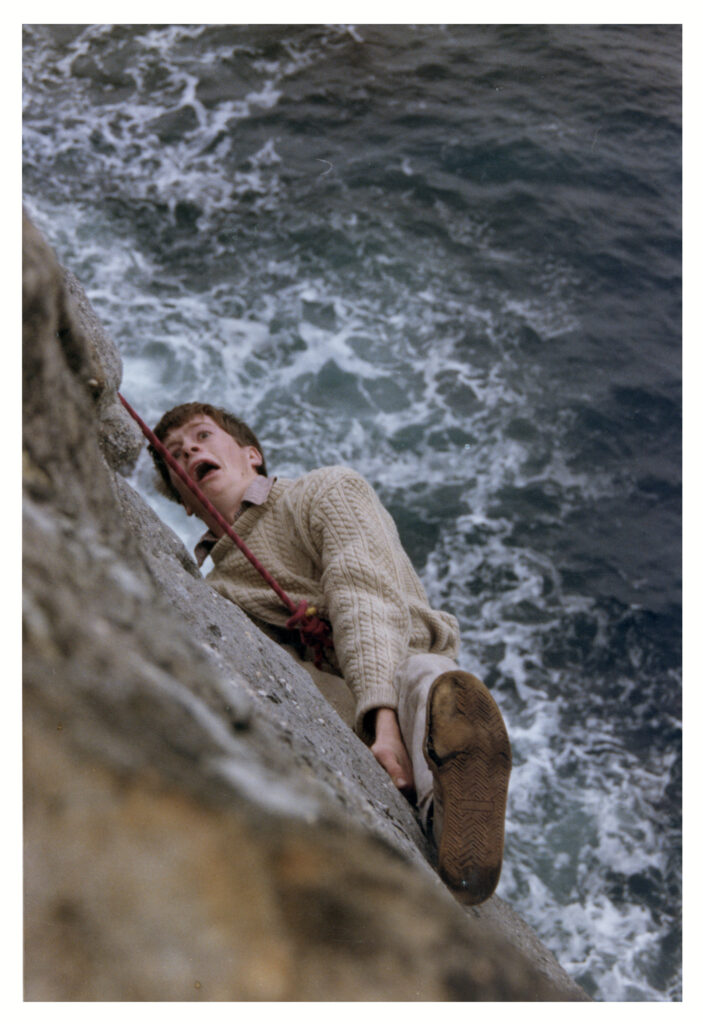
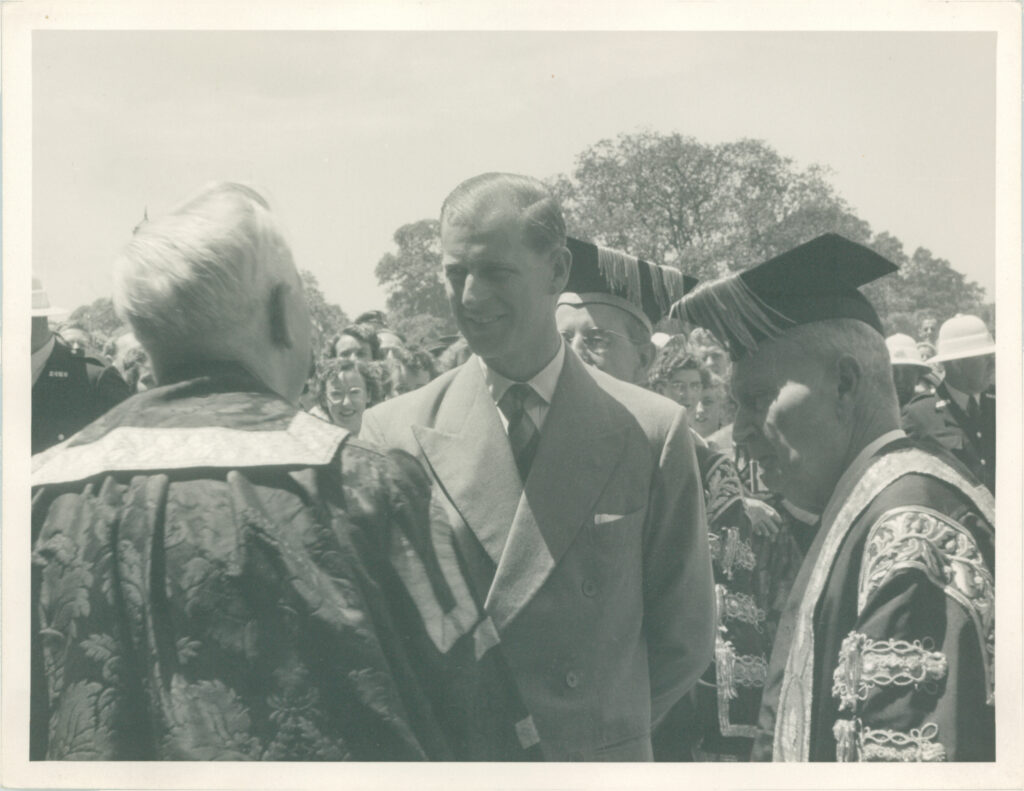
2 February 2024
An Address of Loyalty for the Royalty
His Royal Highness The Prince Philip, Duke of Edinburgh, visited the University on 4 February 1954.
The Acting Vice-Chancellor reported to Senate on 10 August 1953 that, “His Royal Highness will be at the University for approximately 1 1/2 hours and will be entertained at lunch in the Great Hall by Fellows of the Senate of the University of Sydney and Members of the Council of the New South Wales University of Technology”.
The ‘Royal Visit 1954 Working Program’ prepared for the visit specified the requirement for all concerned to, “…synchronise with A.B.C. Time Signals commencing at 11 a.m.”, in anticipation of Prince Philip departing for the University at 12:55pm and travelling via Macquarie Street, College Street, Wentworth Avenue, Hay Street, Pitt Street, Railway Square, Broadway, and Parramatta Road, to arrive at the University at 1:10pm. As soon as Prince Philip exited his car, his Standard was to be unfurled on the Carillon Tower, and the Carillon was to be played during his visit. The Working Program also prepared for wet weather with an alternative plan to have Prince Philip arrive at the entrance to the northern vestibule instead of the Carillon Tower, and umbrellas, “…provided for the protection of His Royal Highness and staff”.
The Chancellor received a letter dated 7 April 1954 from the SS Gothic, the royal yacht from 1952 to 1954, which stated that an ME Adean was, “…commanded by The Queen to convey to you and to all the members of the University of Sydney Her Majesty’s warm thanks for their Address of loyalty”.
The visit came a few months after Elizabeth II was coronated, an occasion which was officially acknowledged by Senate on 4 May 1953 when it was, “…resolved that the following message would be sent to Her Majesty, Queen Elizabeth II…The Chancellor and Fellow of the Senate of the University of Sydney, on the occasion of the coronation…beg to present their humble duty, and, amid the general rejoicings of Her Majesty’s many peoples, to offer…their sincere congratulations and to express the hope that Her Majesty may long reign over a loyal and united Commonwealth”.
Visit of HRH The Prince Philip, Duke of Edinburgh (04/02/1954), G12_47_0372_4, [REF-00076742]. University of Sydney Archives, accessed 02/02/2024, https://archives-search.sydney.edu.au/nodes/view/126928.
Explore the blog for other posts from the University of Sydney Archives and follow us on Instagram.